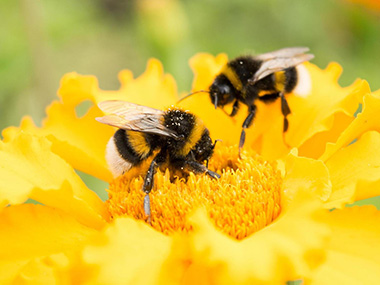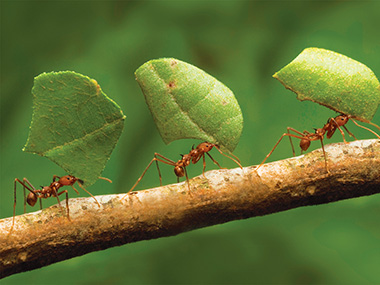Insectamageddon
I have been obsessed with bugs my whole life (insect bugs not microbe bugs – an interest in the latter developed in my 20’s). One of my earliest memories is watching in fascination as a dung beetle rolled elephant droppings on the African savannah and proceeded to walk on its front legs, pushing its ‘prize’ with its back legs.
Last month when I returned to Zimbabwe, my country of birth, I saw an opportunity to investigate some of Africa’s insects. This time I was equipped with tweezers, petri dishes, a magnifying glass and a better understanding of ecology. I couldn’t wait! My excitement soon got family crowded in but many jumped back when they saw I had a ‘Bug?!?’. I tried to convince them of the insect’s beauty and ecological relevance. After all, insects are under constant human-induced obliteration as we kill harmless, even beneficial insects in our chemical fuelled war against annoying or disease carrying insects. Unless we start to value insects, their populations will continue to decline with mass extinctions taking place now and in the future.
The destruction of beneficial insects was confirmed on a safari tour as our guide explained a problem created by insecticide use. Rhinos and elephants have already declined due to poaching, but they can also be harmed by insects including ticks. Humans have therefore used insecticides to kill ticks, but the ticks soon built immunity to the chemicals. However, the insects which feed on ticks did not and were killed by the chemicals. By removing tick predators, the numbers of chemically-resistant ticks exploded resulting in more ticks being found on the animals thus increasing the risk of disease from the pathogens ticks carry. Thankfully, the problem has been reduced by introducing cattle to the game reserve. Cattle skin is thinner than those of an elephant so ticks attach to cattle in preference. Basically cattle are kept as sacrificial animals to ticks, a problem we have created through indiscriminatory destruction of insect populations.
With the widespread use of chemicals to control insects and weeds, we are undoubtedly losing other insects, but are we also losing microbes? Like us, insects contain symbiotic microbes and so I couldn’t help but wonder what microbes are found inside insects and if we would miss these microbes or their host if the insect becomes extinct?
I had to start with the honeybee. These are one of the first insects we learn about as kids, and in addition to honey production, they are vital for our existence through crop pollination. It has been estimated that each year up to US $577 billion (~£440 billion) of agricultural income globally is dependent on insect pollinators while honey production is only worth $300 million (~£239 million) [1]. Despite this, the honeybee populations have been severely depleted through the use of chemicals including insecticides that kill bees directly, and herbicides that kill their food [2]. Their wild numbers are so low that companies now sell and rent bees to orchids for pollination of fruit trees [2]. It is clear bees are affected by our chemicals, but what microbes are being lost alongside them?

Over 6,000 microbial strains have been found in honeybees including the bacteria Bacillus, the Penicillium mould and the yeast Torulopsis [3, 4]. These microbes have different roles ranging from food provision to defence against other microbes and so different microbes are found within the bee to those in their hive [3]. Among the useful symbiotes directly found in the guts of bees are Lactobacillus and Bifidobacterium which ferment sugars and potentially help their immune system [3, 5]. These groups are found in the guts of many animals including us, but bees could harbour different strains which have different biological roles. However, because symbiotic microbes often evade the attempts of scientists to grow them, they remain understudied [3], and so we will not know much about insect’s microbiota until they are lost along with their host.
The hive also provides an environment for production of 'beebread', a food created from fermentation of pollen using bacteria including Bacillus [5]. This beebread can also contain yeasts including Candida to prevent the spoilage of this food [5]. Honey however is relatively devoid of microbes due to its strong antimicrobial ability now being explored for medicinal use [3, 6]. If bees become extinct, we will loss a pollinator, the medicinal properties of honey and their microbiota.
Another insect everyone knows of is the humble ant. Although the carrying capacity of ants varies, they are considered the weight lifters of the insect world, able to support weights 5,000 times their own [7]. The existence of fungus-growing ants and to a lesser extent, leaf cutter ants, is reliant on microbes. These ants provide their inedible leaf cuttings to an underground nest where they grow their fungal dinner on decaying leaf litter. Each ant colony will grow its own fungus in monoculture but fungi cultivated by other colonies, even within the same ant species, shows variance [8]. Fungus-growing ants usually cultivate fungus from the genus Leucocoprinus but additional microbes will grow with the fungus, including fungal parasites such as Escovopsis which consume the ants’ crop [9, 10]. This shows that farming insects are faced with similar challenges to human farmers – their crop can be destroyed by ‘pests’.

While humans usually turn to chemicals, ants turn to microbes. To control Escovopsis, ants encourage the growth of antibiotic producing bacteria including Streptomyces [10]. In fact, Streptomyces is so important for the ants’ survival that it has been found on their bodies and is passed to their children [10]. The Streptomyces is found with the fungus-growing ants regardless of their species or the fungus they decide to cultivate [10]. This illustrates how microbiology can provide a target-specific solution to pest control without destroying other life. If these ants become extinct, we will also lose their microbes which could offer solutions to our ‘pest’ problems.
Unless more people share my fascination with insects, our purge will continue armoured with our synthetic chemicals. We can only protect insects and their microbes if we apply pressure for change. My local council has stopped regular grass mowing around public walk ways so wildflower and the insects they support can recover. However, the chemical onslaught continues and I never see butterflies in the abundance of 12 years ago when I carried out surveys for the RSPB. Will the future contain enough bugs for my obsession to continue?
Alli Cartwright
ECS Communications Officer
Further reading
[1] Modern Agriculture (2018) The beeconomy: economics and insect pollination [Online]. Available from: https://www.modernag.org/biodiversity/beeconomy-economic-value-pollination/
[2] Gross L (2019) Pesticides are harming bees in literally every possible way [Online]. Available from: https://www.wired.com/story/pesticides-are-harming-bees-in-literally-every-possible-way/
[3] Anderson KE, Sheehan TH, Eckholm BJ, Mott BM, DeGrandi-Hoffman G (2011). An emerging paradigm of colony health: microbial balance of the honey bee and hive (Apis mellifera). Insectes Sociaux, 58:431-444
[4] Gilliam M (1997). Identification and roles of non-pathogenic microflora associated with honey bees. FEMS Microbiology Letters, 155:1-10
[5] Menezes C, Vollet-Neto A, Andrés F, Contrera FL, Venturieri GC, Imperatriz-Fonseca VL (2013) Chapter 10: The role of useful microorganisms to stingless bees and stingless beekeeping. In: Vit P, Pedro S, Roubik D (eds) Pot-Honey. Springer, New York.
[6] Israili ZH (2014). Antimicrobial properties of honey. American Journal of Therapeutics, 21:304-323.
[7] Foley JA (2014) Ants can support 5,000 times their body weight before losing their heads [Online]. Available from: https://www.natureworldnews.com/articles/5970/20140210/ants-support-5-000-times-body-weight-before-losing-heads.htm
[8] Byres D (unknown) The first farmers [Online]. Available from: http://web.fscj.edu/David.Byres/tango.html
[9] Celdera EJ, Poulsen M, Suen, G, Currie CR (2009). Insect symbioses: a case study of past, present, and future fungus-growing ant research. Environmental Entomology, 38: 8-92
[10] Currie CR, Scott JA, Summerbell RC, Malloch D (1999). Fungus-growing ant use antibiotic-producing bacteria to control garden parasites. Nature, 398:701-704
